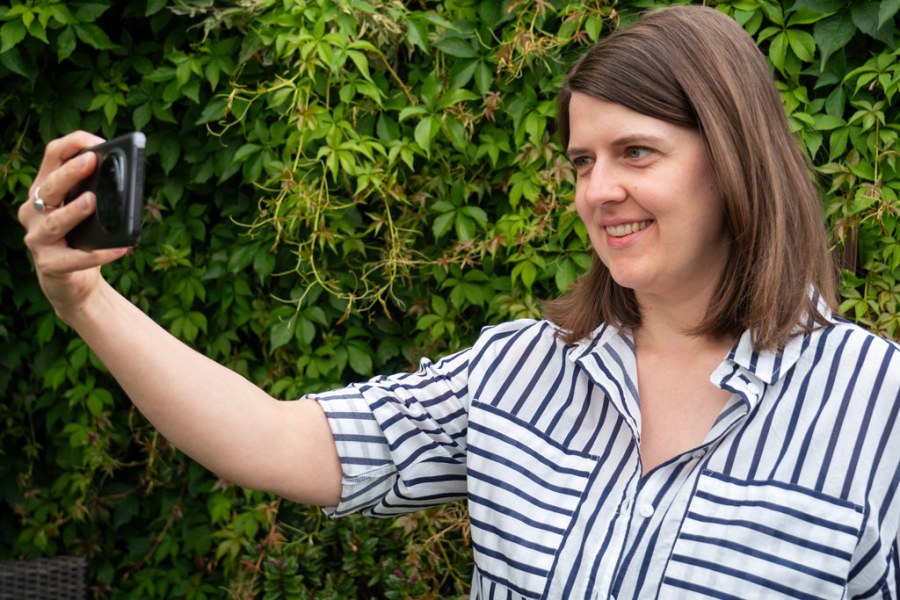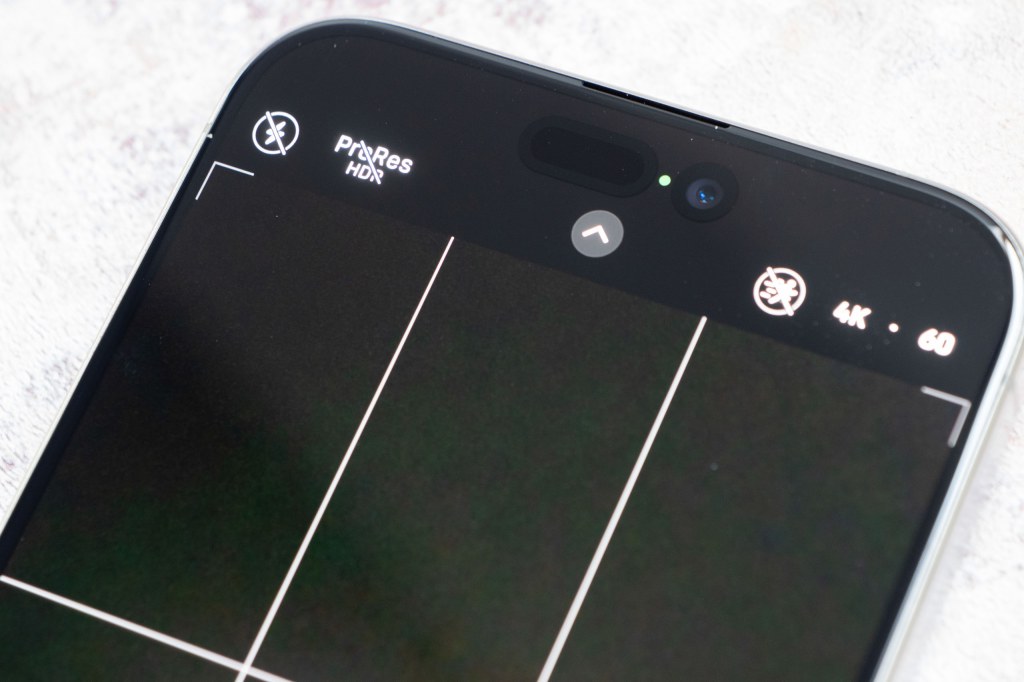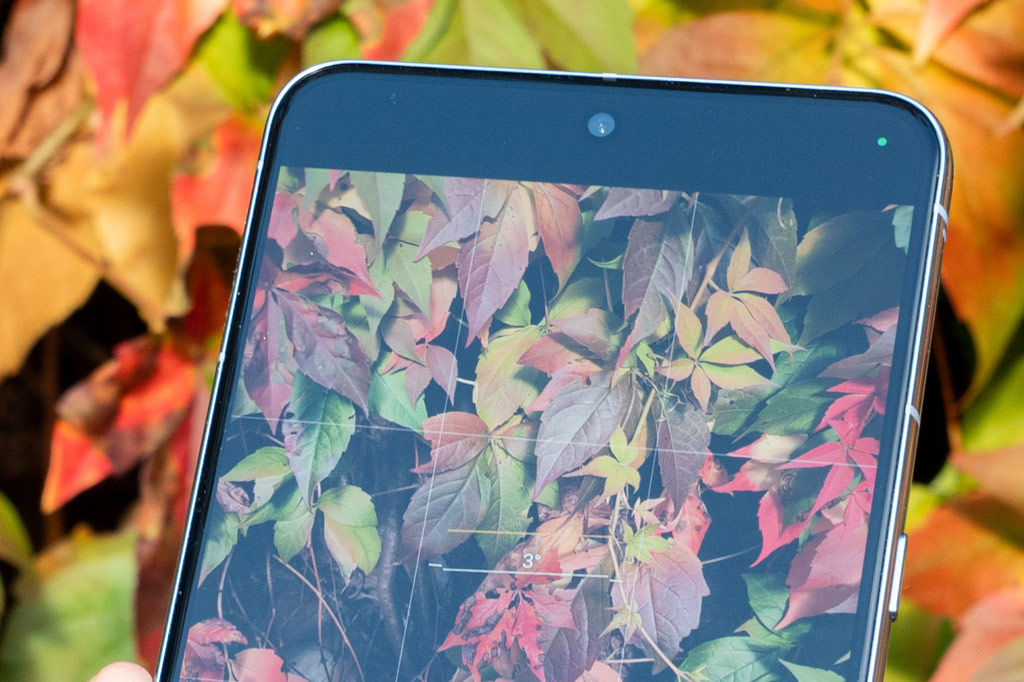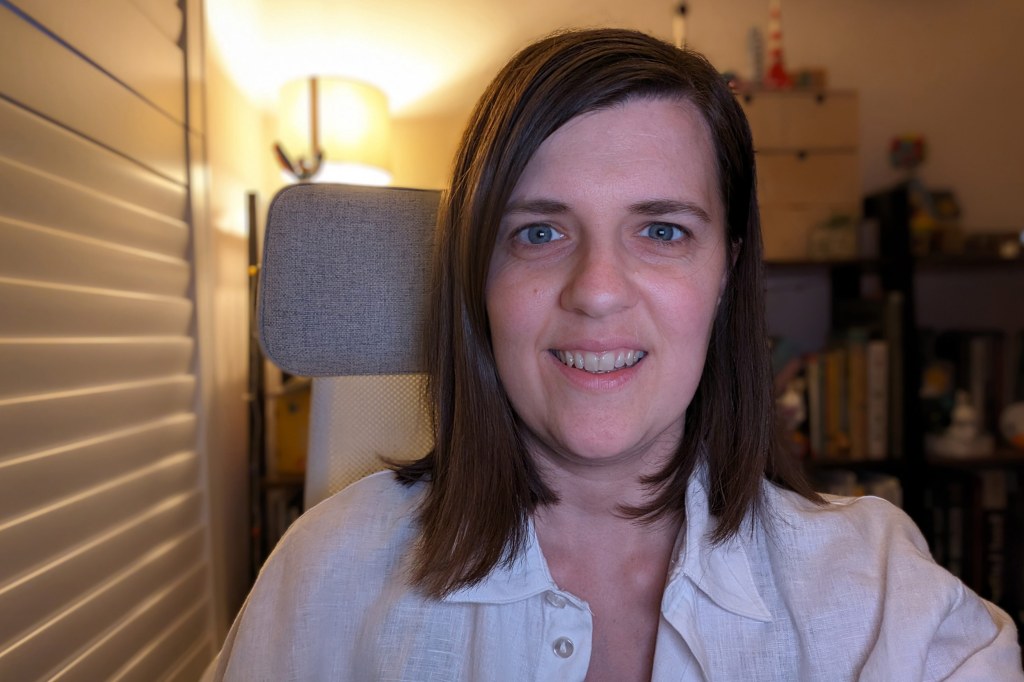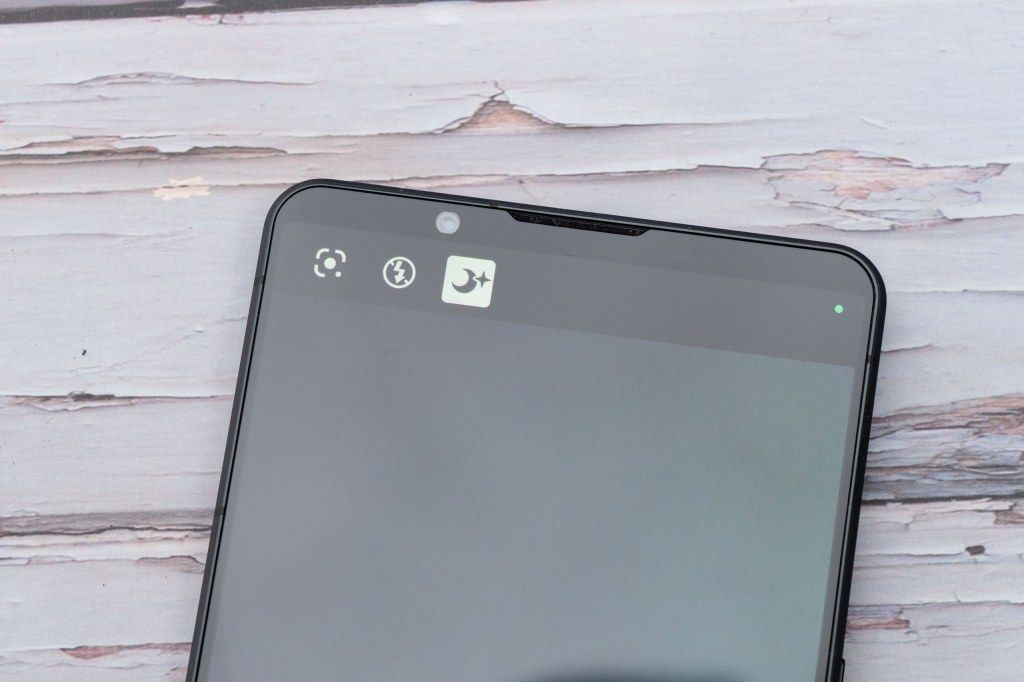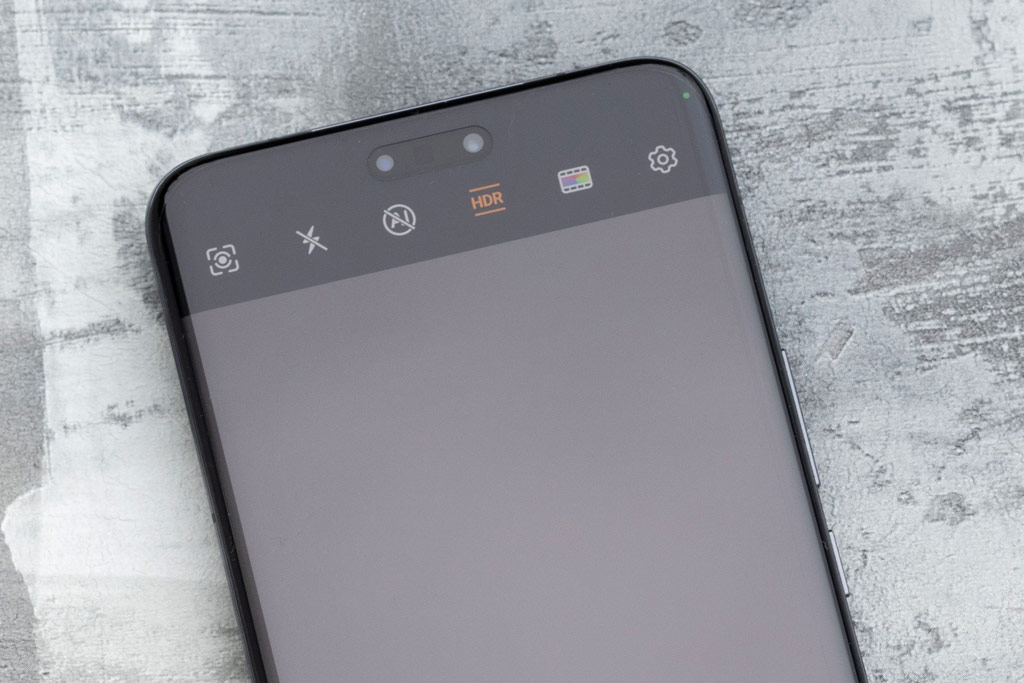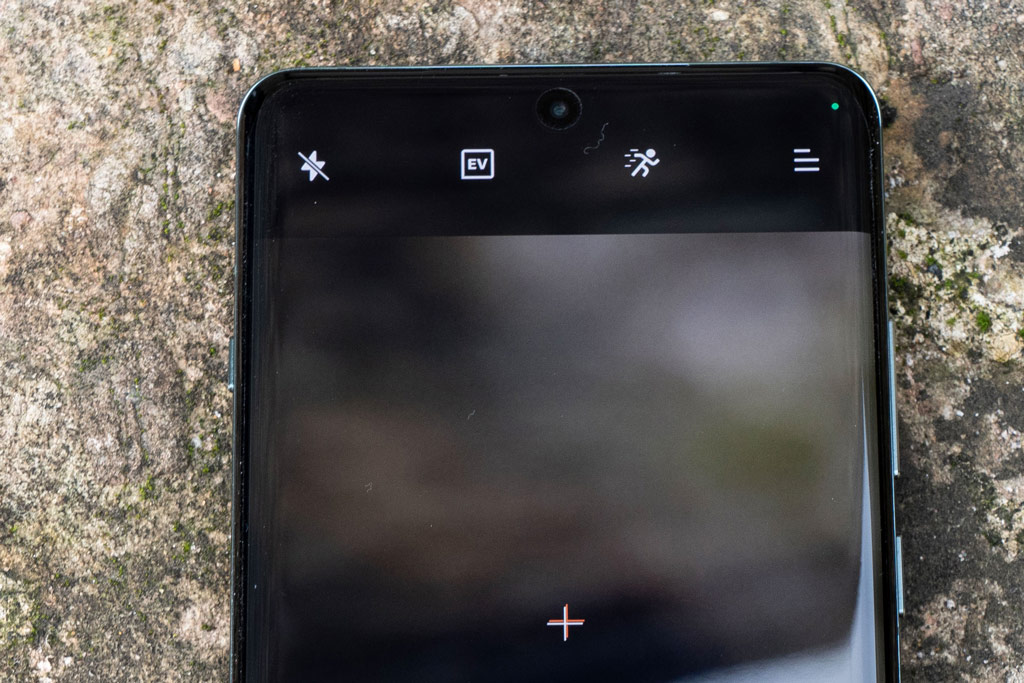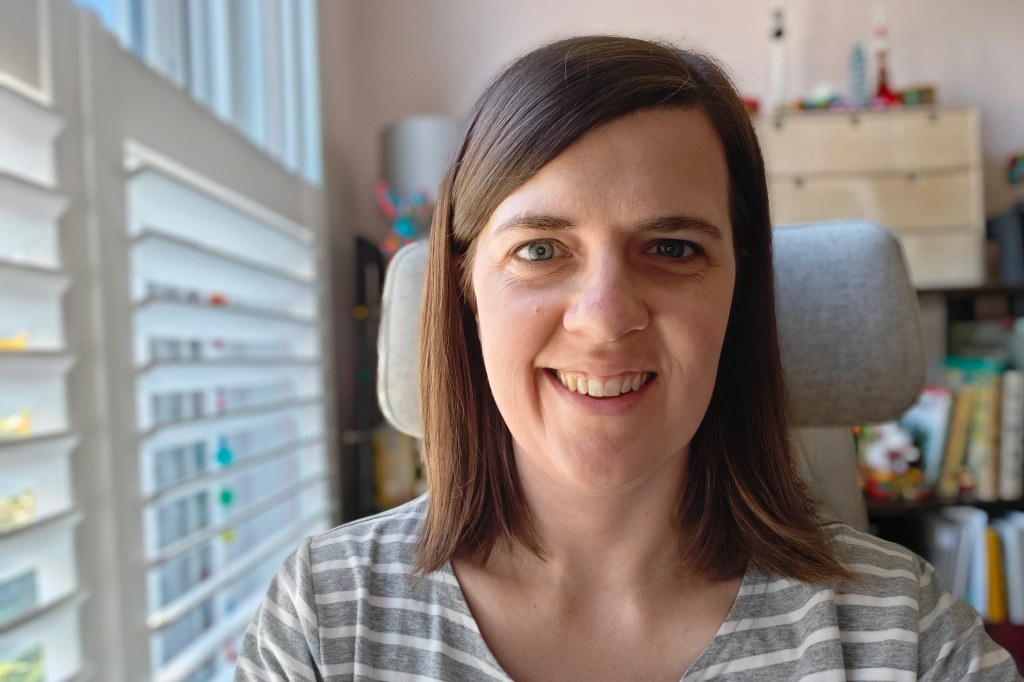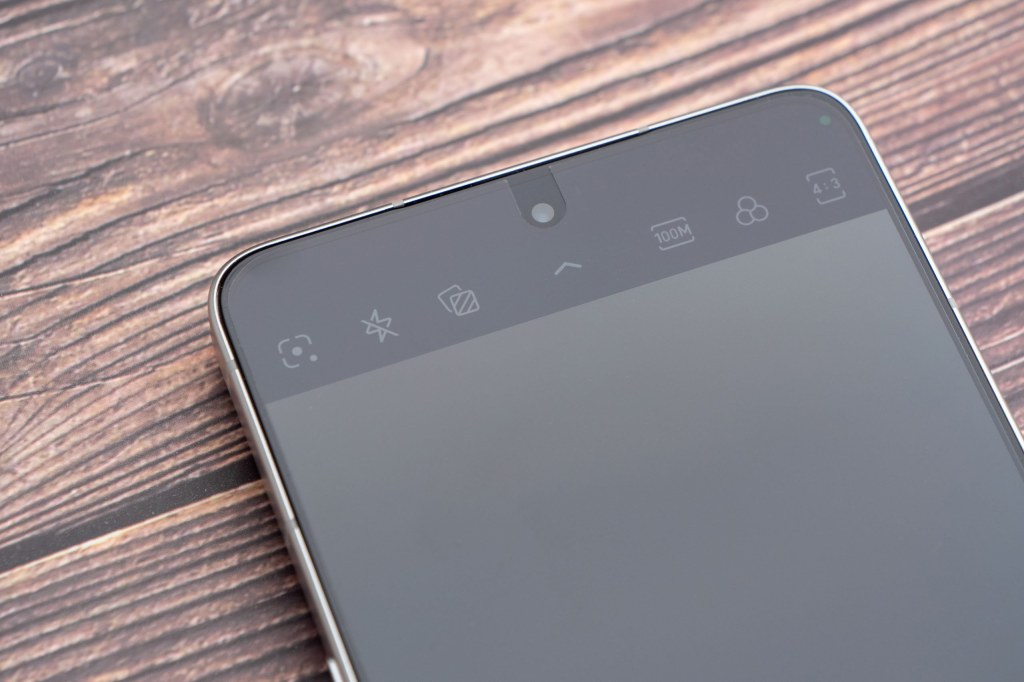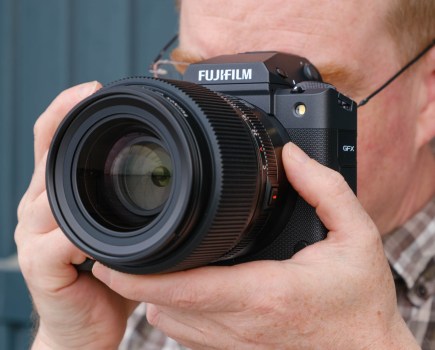When it comes to thinking about the quality of the onboard camera, lists like our best smartphones for photographers usually concentrate on the rear-facing cameras.
Of course, that’s fair enough – but what about when we specifically consider the quality of the front-facing camera? Like it or not, we live in the age of the selfie, so you may as well get the best device possible if you’re going to be taking a lot of photos of yourself.
There are a few things to look for when thinking about the selfie camera. That includes:
- Resolution/Pixel Count: how much detail can you expect from your selfies?
- AF: lots of smartphones don’t include AF for the selfie camera, which can lead to less sharp results
- Shooting modes: You might want to consider whether you can create blurred backgrounds, or blend self portraits with night mode
- Flash/illumination: When using the selfie camera, does the phone offer any illumination for shooting in low light?
To get a feel for exactly how good some of the current smartphones perform for selfies, I had the arduous task of taking dozens of pictures of my own face. It’s a good job I’m not particularly self-conscious!
In the group I included several flagships, including the iPhone 15 Pro Max, the Samsung Galaxy S24 Ultra, the Sony Xperia 1 VI and the Google Pixel 8 Pro. Also included are some lesser-known brands, including the Xiaomi 14 Ultra, as well as some mid-range options such as the OnePlus 12 and the Honor Magic 6 Pro. I also thought it’d be fun to include a super-budget option in the shape of the Tecno Camon 30, to see whether you need to spend big to still get good results.
To be clear – this is in no way a scientific / lab test of the selfie cameras. However I’ve tested them out in a variety of real-world situations, including outdoors in good light, indoors during the day time, and indoors in low light with and without artificial lighting. Therefore, it should help us get a good indication of what works well, and what works less so.
Will we be in for a surprise? Let’s take a look!
iPhone 15 Pro Max
- 12MP
- f/1.9, 23mm equivalent
- AF
The flagship iPhone is of course hugely popular, and I found during my review of it that it is incredibly capable of capturing great images in a range of situations – but that was primarily thinking about the rear facing cameras.
The iPhone 15 Pro Max has a selfie camera with a plethora of impressive ounding specifications, including autofocus, an f/1.9 lens, Smart HDR 5, a Retina Flash, the ability to shoot in raw, lens correction, auto Image stabilisation and more. You can use it with Night mode, and you can also use it with Portrait mode to create blurred backgrounds – you don’t even need to switch to Portrait mode, you can add this effect later, and even change the focus point after the fact. It’s also possible to record 4K video with the front facing camera, which is ideal for content creators. On the downside, it only has a 12MP resolution.
However, I have to say I was very disappointed with the results from the iPhone in all but bright light. When you shoot in the sunshine, then the results are very nice – so if you primarily snap your selfies while on day trips and holidays etc, then you’ll be absolutely fine. However, if you want to photograph your face in less than perfect lighting conditions, the results leave a lot to be desired.
Check the slideshow below. The images taken either outside or inside in very good light look great, with flattering colours, plenty of detail and a fairly natural background blur. However, when the light dropped, detail is very poor and the selfies look smudgy. This is even true when you switch on the “flash” (where the screen illuminates to brighten your face) – though at least the colours from the artificial light have come out well, and it has enhanced the light levels from outside when shooting around sunset.
In fairness, these selfies don’t look too bad on a smartphone screen – so if that’s the only place they will ever live, then you shouldn’t be too disheartened if you’re an iPhone user.
Read our full review of the iPhone 15 Pro Max.
Samsung Galaxy S24 Ultra
- 12MP
- f/2.2, 26mm equivalent
- AF
The flagship from Samsung is another model that performed extremely well in our review. It’s an expensive model, but it can produce great results across a number of situations. Again however, this was thinking mostly about the rear cameras.
Here we’ve got another 12MP device, with a 26mm equivalent f/2.2 lens, dual pixel PDAF. You can record 4K video, and you can also use the different shooting modes, including Night and Portrait with the S24 Ultra. You will need to engage Portrait mode if you want the blurred background, but you can change the focus point afterwards if you want to. There’s a flash option – where the screen illuminates too.
Once again however, I find myself a little bit disappointed. We’ve got great results in good light, but the lower light shots are a bit of a let down. In good light, there’s good detail, colours are lovely and the overall result is flattering. AF means the image is sharp, while the drop off in focus for a blurred background is fairly natural.
Head inside however, and although the AF delivers in-focus shots, detail is dramatically reduced and we’ve got smudgy and blurry results. In one of the shots in the slideshow, it seems like AI has been used to compensate for missing detail and I’ve ended up looking like a painting when you zoom in. When adding flash in low light, the colours have become yellowish, especially if you also have artificial light in the scene.
Overall the results are better than the iPhone’s, but I would expect better from such an expensive model. Again, however, the selfies don’t look so bad on a phone screen.
Read our full review of the Samsung Galaxy S24 Ultra.
Google Pixel 8 Pro
- 10.5MP
- f/2.2, 20mm equivalent
- AF
The Pixel 8 Pro is an excellent smartphone for photography, and we’ve got plenty of good things to say about it in our standalone review of it.
However, it’s also true that it’s got the lowest resolution sensor of any of the selfie cameras in this group, as well as a narrower aperture than most. On the plus side, it does have AF, and you can combine it with Night mode and Portrait mode.
As with pretty much every phone, the selfie taken in good light outside is the best. We have good skin tone, a decent amount of detail and the outline around the hair is reasonable – especially if you don’t scrutinise it too closely. The indoor, good light portrait is also fairly good.
When the light levels drop though, the Pixel’s selfie camera struggles a little bit. In the image without flash and without artificial light, there’s quite a bit of smudging going on and there’s a significant loss of detail. Things are improved if you switch the flash on, but that has the side effect of making the surrounding scene a little bluer in tone than reality.
Under artificial light, the image without flash preserves colours the best, but the face loses detail. Switch the flash on and the face is pretty good here, but the lighting has turned yellowish. You can correct this after the fact if you so desire, so it’s still better than the low-detail result of the iPhone.
I would still probably expect better from a flagship smartphone, especially one which claims to be so good at portraits in general. Perhaps the Google Pixel 9 Pro will see some improvements to this aspect.
Read our full review of the Google Pixel 8 Pro.
Xiaomi 14 Ultra
- 32MP
- f/2.0, 22mm equivalent
- No AF
The Xiaomi 14 Ultra is quite probably the best smartphone for photography available right now. The brand is still relatively unknown in many parts of the world, but it’s latest flagship contains four Leica lenses on the back which all perform very well. But what about at the front?
This selfie camera has one of the highest resolutions in our group here, so that’s good news. It’s also a fairly wide aperture of f/2.0, but, strangely considering the high-end specifications found elsewhere, it doesn’t have AF. You can use the selfie camera with Portrait mode.
On the whole, this doesn’t seem to have resulted in out of focus selfies, however, so that’s not too bothersome. In fact, I’d say this is probably one of the best performers in our group.
The outdoor portrait is the best – as we’d expect. The colours are a little more muted than some of the others, but they’re also probably more realistic. The skin tones are good and the blurred background works well – there’s even some attractive catchlights. The same is true of the indoor daytime shot.
It’s a little bit more of a mixed bag with the lower light shots. In very low light but with no flash and no artificial light, the phone seems to have attempted to make it appear as if the image was taken in daylight – so the background looks great. The portrait however is very smudgy if you look closely, with a painterly look about it. If you switch on the flash (which illuminates the screen), then you get a better result which looks great on a phone screen but you can see if you look closely that noise is quite high, with some missing detail.
With artificial lighting present, the portraits look great on a phone screen, but again, there’s a painterly effect and a lot of smoothing if you examine closely. Also, with the flash switched on, the artificial light has been rendered very yellow.
The results here are pretty much exactly as I’d expect from a fairly high priced flagship so I’m neither under, nor over, whelmed.
Read our full review of the Xiaomi 14 Ultra.
Sony Xperia 1 VI
- 12MP
- f/2.0, 24mm equivalent
- No AF
The Xperia 1 VI is Sony’s latest flagship smartphone. It has some pretty impressive specs when it comes to the rear cameras, but the front-facing device is a little more pedestrian.
It has a low resolution and no AF, which is disappointing for a phone at this price point. It does have a fairly wide aperture though, and it’s possible to use it in “Bokeh” (Portrait) mode.
Considering this phone is priced very highly, I’d say it puts in a disappointing selfie performance. The lack of AF seems to result in softer images than the others on test here. The outdoor selfie is reasonably good, but, the skin tone is far paler than the rest of the images produced, while the outline around the hair is less realistic. The cut-out in the indoor daytime picture is also less than perfect too.
In low light, it does better than the iPhone, but not as good as plenty of others in this group test (including lower priced options). With no flash and no artificial light, the selfie is very dark and loses lots of detail. If you put the flash on, you get the detail back in the face, but it’s not as sharp as I’d like. Oddly, the outline for the blurred background seems to be a bit better in low light.
With artificial light in the scene, without flash, the Xperia 1 VI produces a reasonable image. It’s a bit smudgy and it’s not particularly sharp, but far from the worst on display in this group. The colours are also pretty good. However, if you switch on the flash, while you less smudginess, you also get the light turning yellow, which is disappointing.
Overall, while this is an OK performance in parts, I’d expect better from a high-end flagship.
Read more about the Sony Xperia 1 VI.
Honor Magic 6 Pro
- 50MP
- f/2.0, 22mm equivalent
- AF
Now it’s time to look at how a couple of mid-range phones do. The Honor Magic 6 Pro impressed us in our overall review, with some very good specifications at a slightly reduced price when compared to the likes of the iPhones and Samsungs of this world.
For the front camera, there’s also some fantastic specs on paper. It has a very high resolution sensor, a lovely wide aperture lens and it also includes AF. You can use it with Portrait mode. It should pretty much have everything.
The overall results here are pretty good. The outdoor portrait is, as we’d expect, the best. The colours are very good, and the background blur has been executed well.
Low light reveals some less than perfect results, but again, they look great on the phone screen. In low light without any artificial light present and no flash, we lose some detail in the shadows, and it’s a little bit smudgy. Add in some flash, and the result appears better, but it’s a bit painterly if you look closely.
With artificial light in the scene, the results have also been excessively smoothed. The colour is pretty good, though if you add in flash, you get some yellowing which is less than ideal.
Overall, I’d say this is one of the better performing of the group – which is great news considering you can often pick up the Honor Magic 6 Pro at a good price point.
Read our full review of the Honor Magic 6 Pro.
OnePlus 12
- 32MP
- f/2.4, 21mm equivalent
- No AF
OnePlus has built a solid reputation on producing high-end type smartphones at mid-range prices. The latest flagship, the OnePlus 12 does exactly that and impressed me quite a bit in our standalone review of the phone.
The selfie setup is high resolution – the second highest in our group – but it has a narrower aperture than most, and disappointingly doesn’t have AF either.
Despite that however, the results are pretty good overall. Again, as with all the others, the best results are seen in the outdoor portrait. The skin tones are pleasing, there’s plenty of detail and the drop off to the background is nicely rendered. It’s also pretty sharp despite the lack of AF. The result is a little smudgier indoors in good light, but it’s not too bad.
In low light, it does a bit better than I might have expected from the specs sheet. In low light with no artificial light and no flash, there’s some detail missing in the shadow area but it’s still fairly usable. Switch the flash on and you fill in that missing shadow, but it is still a little painterly in places.
With artificial light in the scene, the colours are a bit yellowish in the background for my liking, particularly with flash added. The skin has been smoothed out a bit, but it’s not too bad.
Read our review of the OnePlus 12.
Tecno CAMON 30 Premier 5G
- 50MP
- f/2.5, 25mm equivalent
- AF
I thought it would be fun to include a budget smartphone in this group, to ascertain whether cheaper models could also pack a punch when it comes to selfies. Now, the caveat here is that Tecno is only available in selected markets.
Despite its low price, the CAMON 30 Premier 5G has some very good specifications, and performed well in my standalone review of it. The company is also extremely proud of its skin-tone technology, so it seemed like the obvious choice to include in the group test.
It has a 50MP selfie camera, the joint highest in our group. It has AF – surprising for a low priced phone, but it has the narrowest aperture of all the phones here.
Considering the price point, I wasn’t expecting fantastic results from the Tecno, but I was pleasantly surprised overall. The outdoor shot has nice tones, and a good background blur. It’s not quite as sharp as some of the others here, which is likely due to the lack of AF.
In low light, it does one of the best in the group, which again is surprising for the price point. With low light, no flash and no artificial lighting, then we do have some shadowing and smudging, but other phones at much higher prices have done a lot worse. Add in the flash and you get a very good result.
With artificial light in the scene, if you don’t use flash, then you get quite a smudgy result – which looks good on a phone screen, but less so when you examine closer. If you add in the flash, the portrait looks great, but the colours in the background have erred ever so slightly towards orange, but it’s overall a very good result.
Read our full review of the Tecno CAMON 30 Premier 5G.
Conclusion
So, what’s the overall result here then?
All of the smartphones performed pretty well in outdoor, bright conditions, while only some excelled in low light.
I was most disappointed by the iPhone, which puts in the worst performance in the group by a country mile. Perhaps this is something that Apple is going to address with the iPhone 16 Pro, but if anyone is a selfie aficionado, it’s very hard to recommend this expensive flagship.
Elsewhere, there was also less than ideal results from expensive options such as the Samsung S24 Ultra and the Sony Xperia 1 VI. The Google Pixel 8 Pro was also a bit of a let-down.
Among the expensive flagships, the Xiaomi 14 Ultra was probably the winner here, but the Honor Magic 6 Pro comes a close second, with the OnePlus 12 not too far behind. The Tecno CAMON 30 Premier 5G probably takes the crown for most (positively) surprising result of the test, putting in a great performance for a phone which is so cheap – which only goes to show that you shouldn’t always judge a phone by its price.
Which one was your favourite?
Related reading:
- Best smartphones for macro
- Best smartphones for street photography
- Best smartphones for portrait photography
- Best smartphones for low light
Follow AP on Facebook, Twitter, Instagram, YouTube and TikTok.

